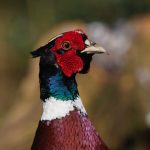
As one of Britain’s most abundant birds, the Willow Warbler Phylloscopus trochilus should have made it onto my yard list much earlier than this. With around 3 million pairs on a small island, they can be found in any habitat that offers a bit of light woodland. They are not shy and they like to sing during the spring, so missing them until now is quite an oversight on my part.
I was drawn to the garden this morning for no reason apart from witnessing the start of a beautiful day. A European Robin was warning its youngster with a rapid ticking alarm and a Blue Tit was churring.
I looked up and noticed a small, yellowish bird with a pale supercillium clearly visible to even naked, rheumy, early morning eyes. I dashed back indoors to grab my binoculars and camera. There is a very similar bird, the Chiff Chaff, that needed to be eliminated before I could note Willow Warbler on my yard list.
The yellowish tinge was a strong indicator, but not conclusive by any means. The spring songs are very easy to separate, but calls are confusingly similar. My preferred determining factor is the leg colour. Chiff Chaff legs are dark whereas the Willow Warbler sports lighter brown or grey legs, often with a suggestion of yellow. The cheek area beneath the eye is also lighter in the Willow Warbler.















Leave a Comment